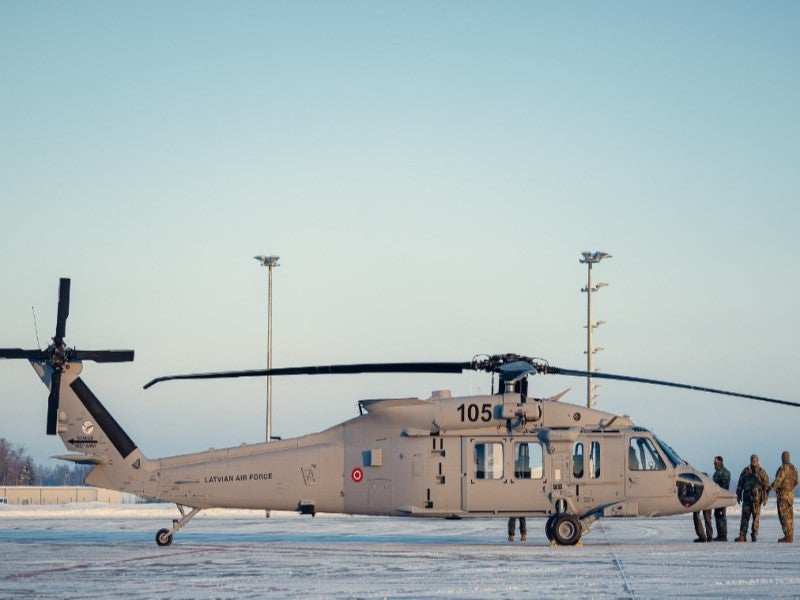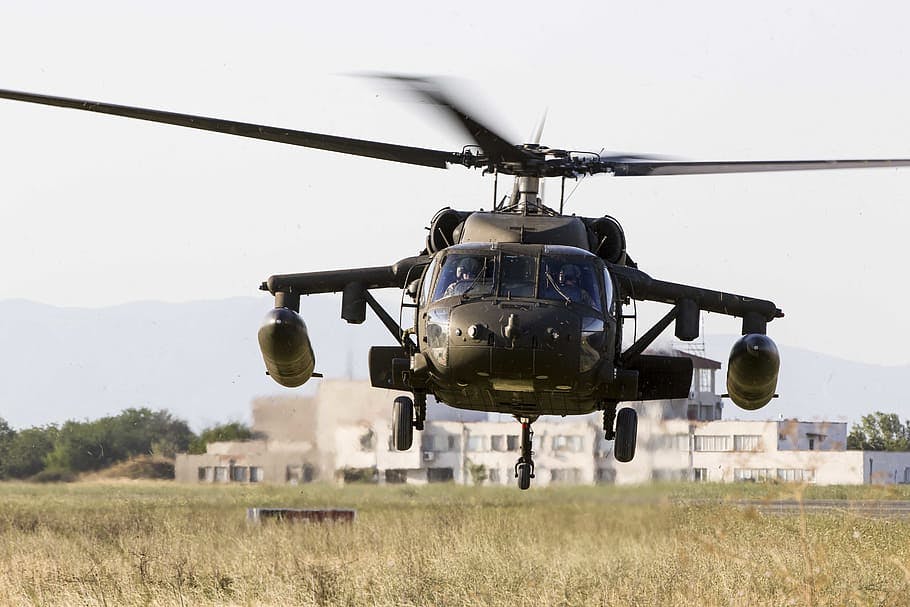Upkeep and Upkeep of the UH 60 Black Hawk Helicopter
Upkeep and Upkeep of the UH 60 Black Hawk Helicopter
Blog Article
Understanding the Role and Significance of Different UH60 Components in Aeronautics Workflow
In the elaborate globe of aeronautics procedures, every part of a UH60 helicopter plays a critical function in making sure safe and effective trips. As we explore the significance of the blades system, engines, avionics, transmission system, and touchdown gear in UH60 operations, a deeper gratitude for the synergy of these elements arises, dropping light on the intricacies that underpin the air travel industry's dedication to accuracy and integrity.
Rotor System
The blades system, an important component in helicopter style, plays a crucial function in supplying lift and directional control during trip. Being composed of the main rotor and tail rotor, this system is accountable for generating the necessary aerodynamic pressures to keep the helicopter airborne and maneuverable.
In comparison, the tail blades, positioned at the tail end of the helicopter, counteracts the torque created by the major blades's rotation, making sure the helicopter stays balanced and can make controlled turns. Together, these blades parts create a sophisticated system that enables helicopters to carry out a large array of trip maneuvers efficiently and safely.

Engines
In aviation operations, the correct functioning of engines is vital to enhancing the rotor system's aerodynamic capacities in helicopters. The UH60 helicopter is outfitted with 2 General Electric T700-GE-701D engines, each providing 1,890 shaft horsepower. These turboshaft engines are critical parts that power the primary rotor transmission, tail blades system, and other crucial helicopter systems. The engines play a vital duty in generating the necessary power to lift the aircraft, control its flight, and make sure a secure operation.
In case of engine breakdowns or emergencies, pilots rely on their training and the helicopter's design functions to perform required treatments quickly and securely. In general, the engines in UH60 helicopters are vital elements that add dramatically to the airplane's functional success and objective performance.
Avionics
Avionics innovation plays an essential duty in modern-day aviation procedures, integrating electronic systems for interaction, navigation, and airplane administration. In the UH60 helicopter, avionics incorporate a variety of systems that make sure safe and effective trip. uh 60. These systems consist of communication equipment, such as transponders and radios, which enable pilots to connect with air traffic control service and other aircraft. Navigation systems, like GPS and inertial navigation systems, supply exact placing information to the team, aiding in route planning and guaranteeing accurate navigation throughout trips. Furthermore, avionics consist of flight management systems that aid automate different tasks, such as autopilot functions and trip information recording.
Moreover, avionics play an important role in improving situational awareness for pilots, enabling them to monitor critical trip specifications, weather problems, and possible hazards in real-time. By providing important data and automation capacities, avionics contribute significantly to the safety and security, efficiency, and overall performance of UH60 helicopters in diverse aviation operations.
Transmission System
An essential element of the UH60 helicopter's capability and performance is its transmission system. The transmission system in a UH60 helicopter is in charge of transferring power from the engines to the major rotor and tail blades systems. This vital component Check This Out ensures that the helicopter can steer successfully and maintain security during flight procedures.
The transmission system in the UH60 helicopter is composed of various parts, including the main transmission, intermediate transmission, tail transmission, and drive shafts. Each of these parts plays a vital duty in making sure that power is dispersed efficiently throughout the aircraft.
The main transmission is especially important as it transfers power from the engines to the major rotor system, allowing the helicopter to lift off the ground and accomplish ahead, backwards, and side here activity. The tail transmission, on the other hand, transfers power to the tail blades, which helps counteract the main rotor's torque and supplies directional control.
Landing Gear


The landing equipment of the UH60 helicopter serves as an essential element for guaranteeing stable and risk-free ground operations, complementing the performance of its transmission system. Containing wheels, shock absorbers, and support structures, the touchdown equipment supports the helicopter's weight throughout takeoff, landing, and while on the ground. The layout of the touchdown gear is vital for dispersing the airplane's weight uniformly to stop tipping or structural damage. Furthermore, the landing gear plays an important duty in absorbing the influence of landings, minimizing the stress and anxiety on the airframe and guaranteeing a smooth touchdown. Proper maintenance of the touchdown gear is essential to guarantee optimum performance and safety and security throughout operations. Normal examinations, lubrication, and substitute of worn-out elements are needed to promote the integrity and performance of the landing equipment system. Pilots and ground teams have to abide by appropriate treatments to make sure the honesty of the landing equipment and enhance total trip safety.
Verdict
Finally, the various parts of the UH60 helicopter play essential roles in making sure the smooth operation of aeronautics activities. uh 60. The rotor system, engines, avionics, transmission system, and touchdown equipment all collaborate to guarantee the security and effectiveness of the airplane. Understanding the significance of each part is essential for pilots, designers, and maintenance team to make sure the total functionality of the UH60 helicopter throughout trip procedures

Report this page